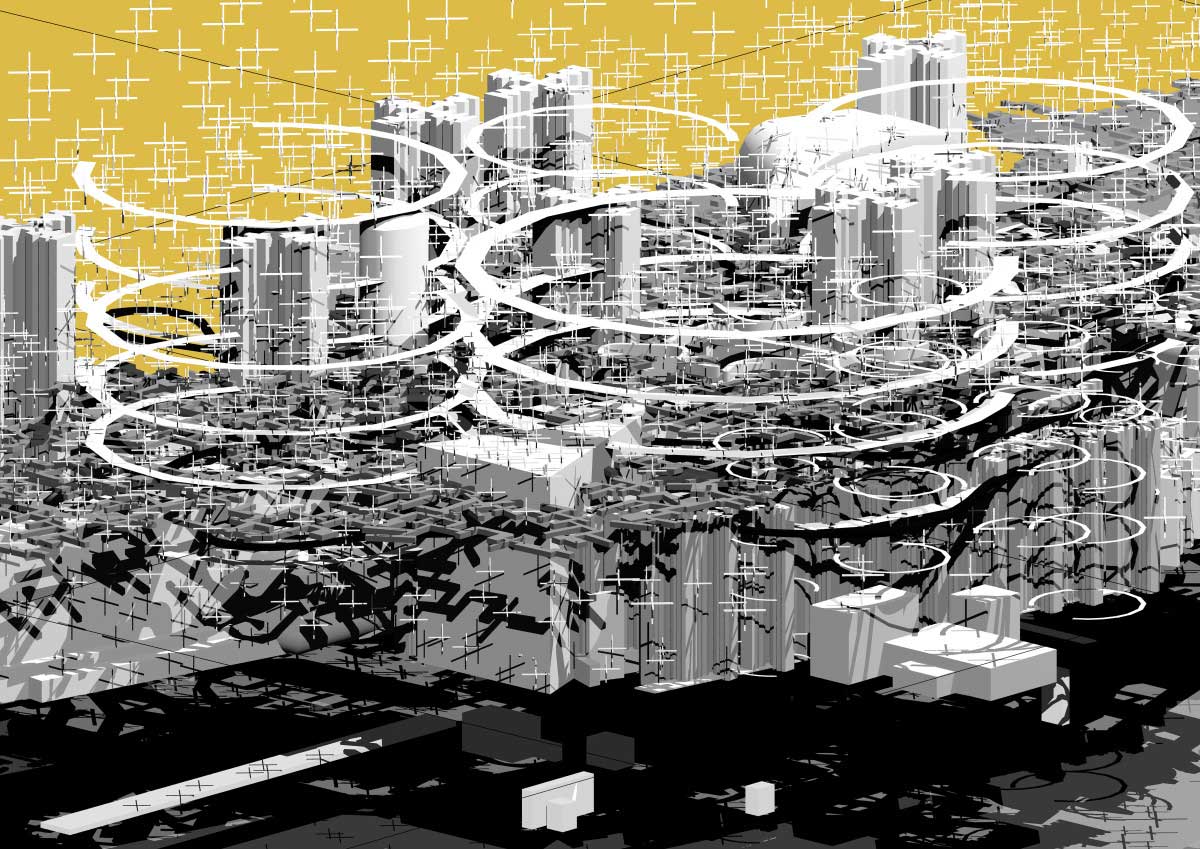Radical Architecture
at the Royal Academy
Professor of Architecture Nic Clear’s work ‘The Post-Singularity City’ is appearing the Academy’s exhibition, titled ‘What is radical today? 40 Positions on Architecture’
THE Royal Academy has invited 40 of the world’s most radical architects to share their visions of the future. One of them is the University of Huddersfield’s Professor Nic Clear, who takes a utopian view of things to come. He has contributed an exhibit which encapsulates his belief that Artificial Intelligence will lead to major improvements in society.
The exhibition at the RA in London is titled What is radical today? 40 Positions on Architecture. It includes contributions from globally-renowned architects and designers, including Sir Peter Cook, Denise Scott-Brown and Gaetano Pesce.
Nic Clear, who is Professor of Architecture at Huddersfield, has twice been included in the Academy’s famous summer shows and has now been invited by the institution’s Head of Architecture to contribute to the latest exhibition, which runs until 7 November. His A3-sized artwork, accompanied by explanatory text, is titled The Post-Singularity City, and is the latest product of Professor Clear’s philosophy that technology, including AI, is making life better and that it is possible to design utopias.
With Master’s students at the University of Huddersfield he is running a project called The Early Days of a Better Future. Based on a ten-year development plan drawn up by the local Kirklees Council, it examines how new technology has an important role in revitalising places such as Huddersfield.
The students – based in the University’s new Barbara Hepworth Building – will include film and animation in their portfolios, and in his own work Professor Clear draws on a wide range of influences that include science-fiction as well as several previous projects in which he has envisioned utopian cities of the future.
Says Professor Clear: “It takes the idea that technology is converging to the point where we will be developing artificial intelligences that will be able to design replicas of themselves and create a cascade of technology that will bring rapid improvement.”
He points to history to make his case about the transformative effects of technology. “I sincerely believe that 2019 is much better in terms of people’s lived experience than 1919, as 1919 was better than 1819.”
The Royal Academy’s What is radical today? exhibition looks back to the 1960s and 1970s, described as “tumultuous decades of political unsettlement and social upheaval” that saw the emergence of architects who believed in “the transformative power of architecture to change lives, cities and thinking”.
“Today, it could be said we are living in a similarly turbulent period of global changes with environmental, political and social upheaval. This display in the Architecture Studio questions what today’s practitioners are responding to by inviting 40 emerging and established architects, artists and thinkers to present their visions of what is most radical in architecture today.”
More Stories
Prof’s underground city exhibits at Royal Academy
Professor Nic Clear’s model of an underground city, entitled Chthonopolis, is part of the Royal Academy’s Summer Exhibition
Unfinished mystery on Renaissance art in new book
An investigation by Professor Nicholas Temple into the Lorenzo Ghiberti’s incomplete manuscripts reflecting on artistic progress
Photographer wins Sony World Photography Award
Dr Yan Wang Preston took the award in the Landscape category for her work depicting an ecology recovery project in China

